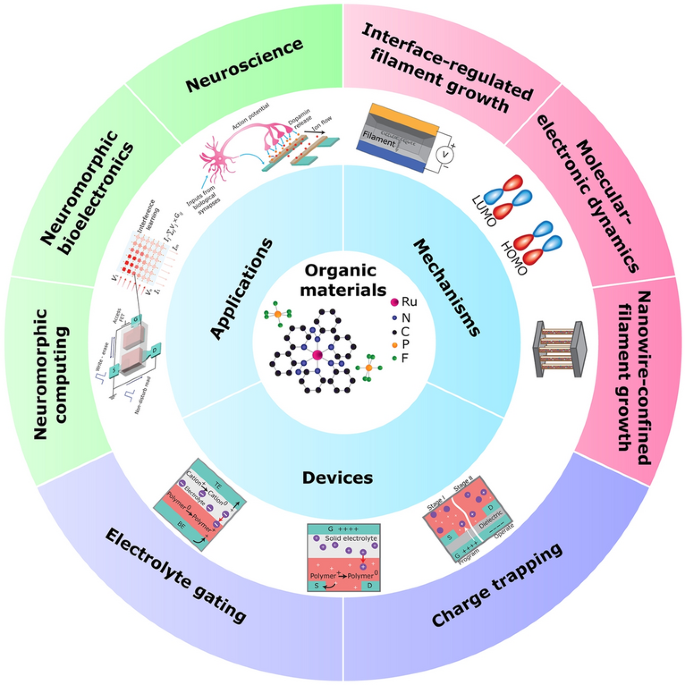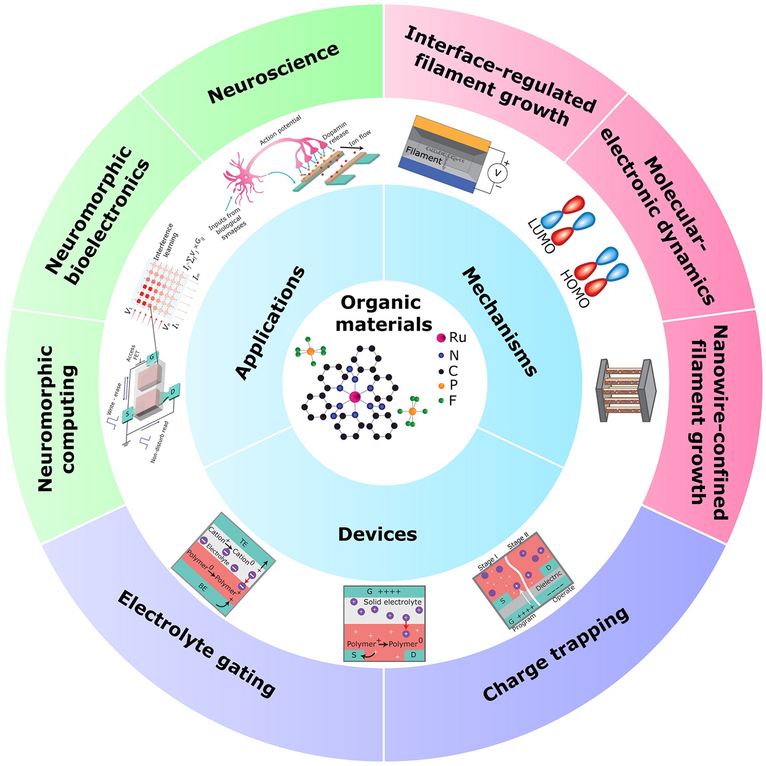Multifunctional Organic Materials, Devices, and Mechanisms for Neuroscience, Neuromorphic Computing, and Bioelectronics
Published in Chemistry, Materials, and Neuroscience

As the demand for more efficient and versatile computing technologies grows, researchers are increasingly turning to nature for inspiration. A recent comprehensive review published in Nano-Micro Letters, led by Professor Desmond K. Loke and co-authored by Felix L. Hoch, Qishen Wang, and Kian-Guan Lim, explores the latest advancements in organic neuromorphic devices. These devices, leveraging the unique properties of organic materials, offer a promising solution for low-power, flexible, and bio-compatible computing systems.
Why This Research Matters
- Enhanced Computational Efficiency: Traditional silicon-based computing technologies face limitations in energy efficiency and adaptability. Organic neuromorphic devices, inspired by the brain's neural networks, can perform complex computations with significantly lower power consumption, making them ideal for applications ranging from artificial intelligence to edge computing.
- Versatile Applications: These devices have the potential to revolutionize various fields, including environmental monitoring, medical diagnostics, and robotics, by providing real-time, high-sensitivity detection of a wide range of signals.
- Bio-Compatibility and Integration: Organic materials can be easily integrated with biological systems, enabling the development of advanced brain–computer interfaces and biohybrid systems that can monitor and modulate neural activity.
Innovative Design and Mechanisms
- Resistive Switching Mechanisms: The review delves into various resistive switching mechanisms, such as interface-regulated filament growth, molecular-electronic dynamics, nanowire-confined filament growth, and vacancy-assisted ion migration. These mechanisms enable the devices to dynamically adjust their electrical conductivity, mimicking the behavior of biological synapses.
- Material Innovations: The study highlights the use of organic materials like carbon nanotubes (CNTs), graphene, and conductive polymers. These materials offer advantages such as large specific surface area, superior electrical properties, and excellent sensing capabilities, making them suitable for constructing high-performance neuromorphic devices.
- Device Architecture: The review examines different device architectures, including two-terminal and three-terminal configurations, and their implications for synaptic functionality and neural network implementation. The choice of architecture affects the device's ability to perform complex computations and emulate biological neural networks.
Applications and Future Outlook
- Neuromorphic Computing: Organic neuromorphic devices can be integrated into hardware accelerator systems for in-memory computing, minimizing energy-intensive processes and enabling efficient execution of machine learning algorithms.
- Neuromorphic Bioelectronics: These devices can interface with biological systems, creating biohybrid synapses that can process both biochemical signals and electrical signals. This opens up possibilities for advanced prosthetics, neuroprosthetics, and brain–computer interfaces.
- Neuroscience: Organic neuromorphic materials can be used to monitor and manipulate large-scale cerebral processes, providing insights into neural dynamics and aiding in the treatment of neurological disorders.
The review concludes by highlighting the potential of organic neuromorphic devices to overcome the limitations of traditional computing technologies and contribute to the development of next-generation systems. Future research should focus on further optimizing the materials, improving device stability, and exploring new applications.
Stay tuned for more groundbreaking research from Professor Desmond K. Loke and his collaborators as they continue to push the boundaries of organic neuromorphic technologies and bioelectronics.
Follow the Topic
-
Nano-Micro Letters

Nano-Micro Letters is a peer-reviewed, international, interdisciplinary and open-access journal that focus on science, experiments, engineering, technologies and applications of nano- or microscale structure and system in physics, chemistry, biology, material science, and pharmacy.
Your space to connect: The Psychedelics Hub
A new Communities’ space to connect, collaborate, and explore research on Psychotherapy, Clinical Psychology, and Neuroscience!
Continue reading announcement





Please sign in or register for FREE
If you are a registered user on Research Communities by Springer Nature, please sign in